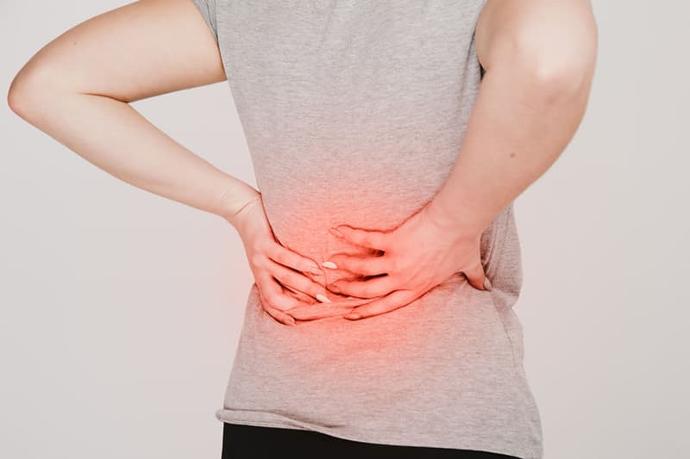Information
A common myth about back pain is that you need to take a lot of rest to avoid moving. In fact, doctors do not recommend rest. If you have no signs of a serious cause of your back pain (such as loss of bowel or bladder control, weakness, weight loss, or fever), keep as active as possible.

Avoid rigorous physical activity for at least the first few days. This can help decrease inflammation and swelling in the area affected. Apply heat or ice to the painful area. Use ice for the first 48 to 72 hours, then use heat. Take anti-inflammatory pain relievers such as ibuprofen (Advil, Motrin IB) or acetaminophen (Tylenol). Sleep in a curled-up, fetal position with a pillow between your legs. If you usually sleep on your back, place a pillow or rolled towel under your knees to relieve pressure During the first six weeks after the pain starts, avoid activities likely to be a source of back discomfort. DO avoid exercising in the days following the pain starts. After 2 to 3 weeks, begin exercising again little by little. A physical therapist can teach you which exercises are good for you.
Improve your posture Strengthen your back and abdomen, and improve flexibility Lose weight Avoid falls
1. Jogging
2. Contact sports
3. Racquet sports
4. Golf
5. Dancing
6. Weight lifting
7. Leg lifts when lying on your stomach
8. Sit-ups
2. Spread your feet apart to increase your base of support.
3. Stand as close as possible to the object you are lifting.
4. Bend at your knees, not at your waist.
5. Tighten your stomach muscles as you lift or lower the object.
6. Hold the object as close to your body as you can.
7. Lift using your leg muscles.
8. As you stand up while holding the object, DO NOT bend forward. Try to keep your back straight.
9. DO NOT twist while you are bending to reach for the object, lifting it up, or carrying it.
1. Whenever possible, do not stand for a long period of time. If you must stand for your work, place a footstool adjacent to your feet. Alternate resting each foot on the footstool.
2. DO NOT wear high heels. Wear shoes that have cushioned soles when walking.
3. When sitting down, make sure that your chair has these features: an adjustable seat back, armrests, and a swivel.
4. Use a stool under your feet while sitting so that your knees are higher than your hips.
5. Rest a small pillow or rolled-up towel behind your lower back while sitting or driving for long periods of time.
6. If you drive long distances, step to the side (rather than lifting) and walk around every hour. Don't lift heavy objects after you have completed a long ride.
7. Lose weight.
8. Do exercises to strengthen your abdominal muscles. This will strengthen your core to decrease the risk of further injuries.
9. Learn to relax. Try methods such as yoga, tai chi, or massage.


